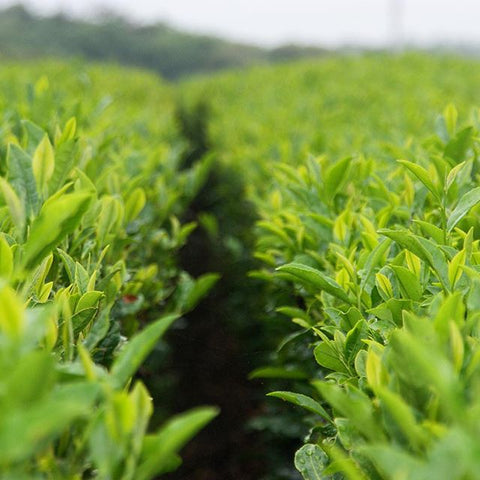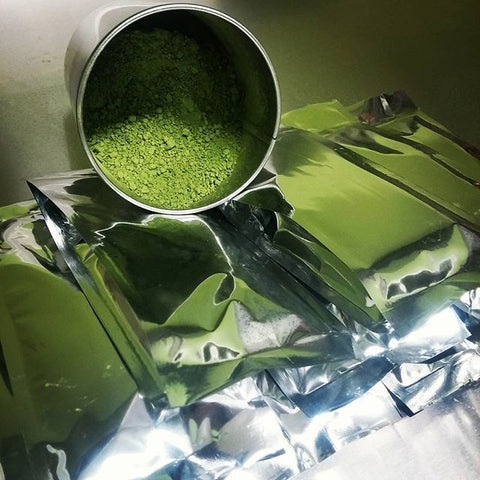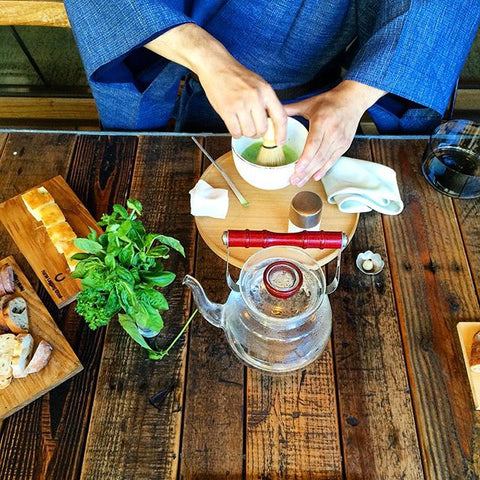
The process of growing tea plants for Matcha production is extensive and dates back to centuries ago. Since Matcha is made from whole tea leaves, only the highest quality leaves are used to produce it.

Growing tea plants for producing Matcha is considered an art in Japan. The Japanese regions Uji and Nishio are the two places where Matcha is grown. Another place called Kyushu Island also produces some Matcha. But the Matcha from Uji is considered to be of the best quality.
Matcha’s flavor is unique, because it is made from tea plants which are grown in a different way than other types of tea. Young leaves from the first flush are picked to make Matcha out of. More often than not, tea plantations in mountainous regions are chosen for Matcha production because in those areas, the growth of tea plants is much slower.
In mid-April, some weeks before harvest, tea plants are covered with a sheet made of reeds to ensure that the leaves get only little to no sunlight exposure. This process slows down the growth of sprouting leaves and increases chlorophyll production in the leaves, giving the leaves a bright verdant colour. After a little more than a week, straw is spread on the reeds to minimise the sunlight exposure even further. By this time, young leaves grow lean and wide in order to capture the available sunlight. After 3-4 weeks the leaves are plucked and immediately taken to the processing facility.
The reason why this is done is it makes the sugar, chlorophyll and antioxidant content concentrated in the tea leaves. It also produces a distinct umami.

First, the leaves are briefly exposed to steam to stop oxidation and preserve the bright green colour of the tea leaves. Then the steamed leaves are naturally dried and cooled down to stop the cooking process. At this stage, the leaves are called Tencha.
In the next phase, the stems and veins of Tencha leaves are removed by placing them underneath a big drum. Then the Tencha leaves are ground using a (typically motorised) granite mill until a fine, powdery texture is achieved. This is when the leaves become Matcha.

Matcha is considered to be of higher quality than other green teas in the world. The reason behind this is that Matcha is made ONLY from the freshest leaves of the first flushes of the harvest. The leaves are handpicked to preserve their freshness and flavour. Only the highest quality leaves are allowed to be used to make Matcha from because the whole leaves are turned to powder, which is mixed with water for drinking.
Shading of the tea leaves is an extensive process which takes a lot of hard work and attention to detail. Workers at the tea plantation have to make sure that not a single leave is exposed to sunlight and also aromatic compounds and amino acids are properly permeated into the leaves for a full umami.
Besides, tea plants that are used for making Matcha can only be shaded and plucked once a year.
All these processes have a part to play in the beautiful flavour, colour and variety of health benefits of Matcha tea. So I hope I’ve been able to answer the most frequently asked question I’m faced with. If you want to know more, or have a question or two for me, email me at Drew@Teaologists.co.uk

|
Comments will be approved before showing up.